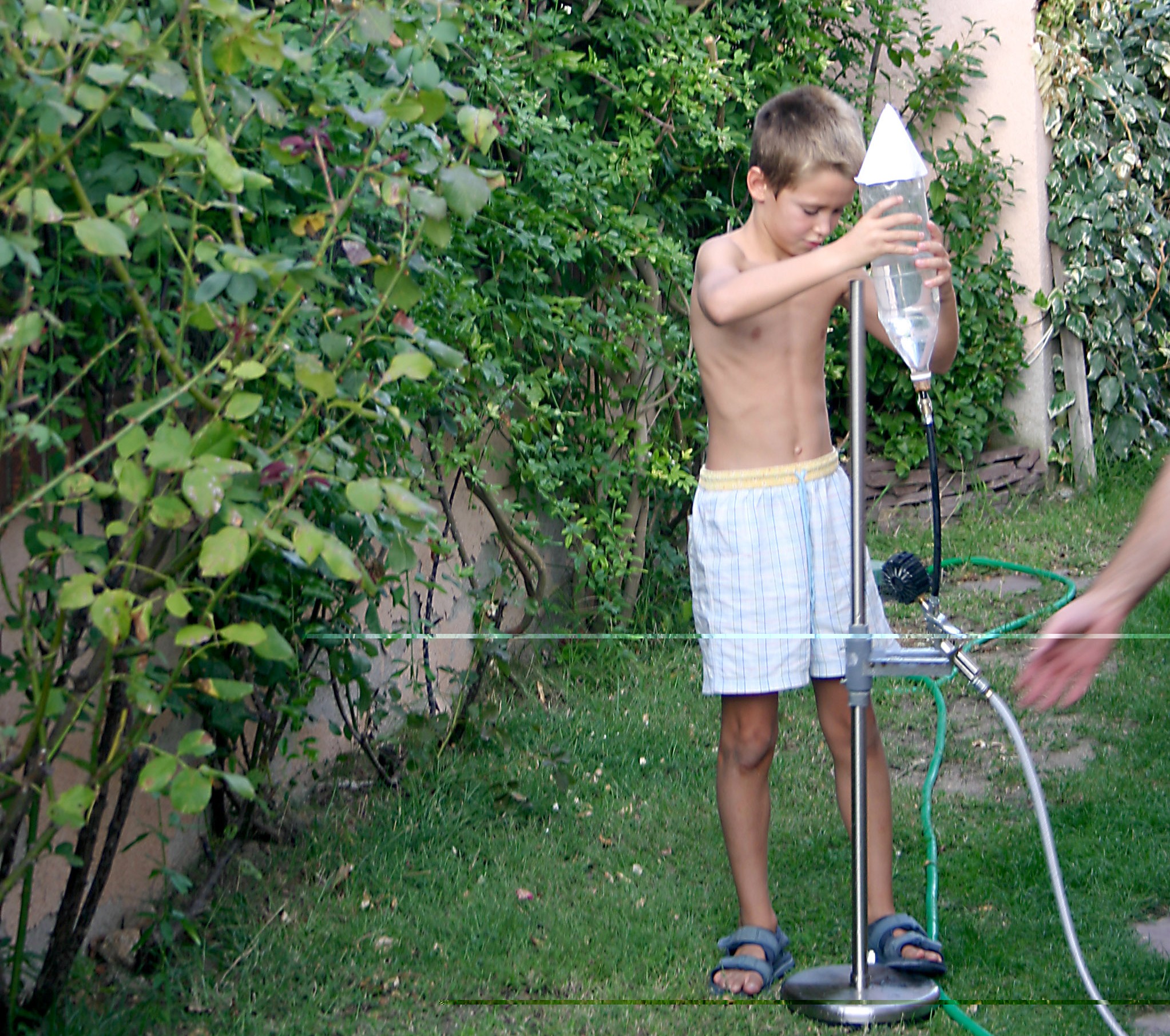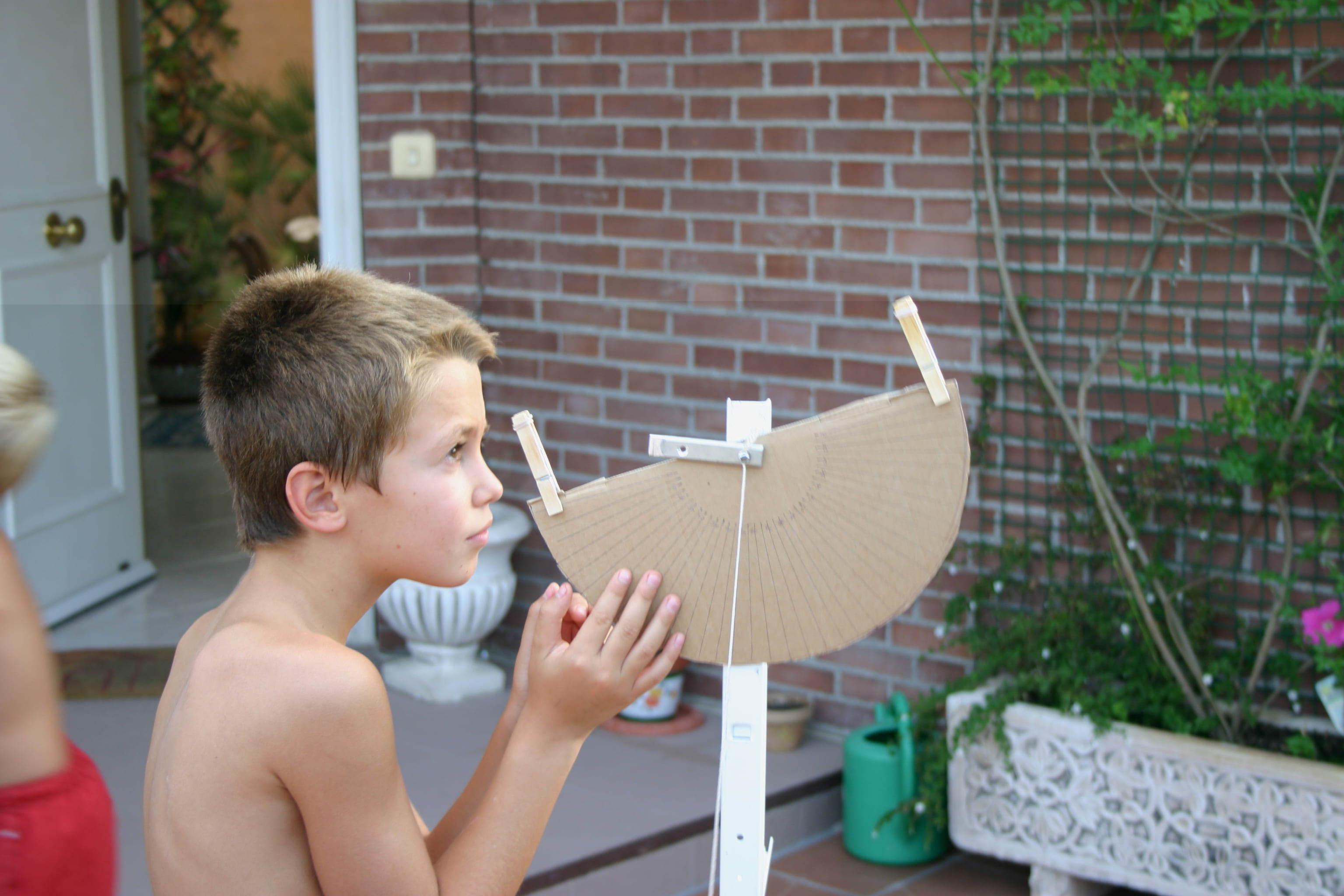Water Rockets
2004


Who has not dreamt of constructing a rocket to reach the Moon? Although for this project I was mere public (helper if any), being my dad the responsible for the concept, the launch base, the parachute system etc. this experience shaped in part my dream of becoming an astronaut first, and then more realistically an Aerospace Engineer.
Simple soda plastic bottles were filled about a third with water, and then fitted with a cork through which a needle passed to pressurize their interior. When the pressure was high enough (around 3 bars), the cork would release, the water escape down, pushing the plastic bottle up into the sky.
Since the bottle did not rise enough to pass our fence and land on our neighbours garden, my dad manufactured a launching pad with some zip-ties, a sprinkler spring and cylindrical cover, some wood and a rope. The sprinkler cover was pressed against the bottle by its internal spring, holding a set of zip-ties around the mouth of the bottle, and preventing the cork from being released. This allowed much higher pressures in the ‘combustion chamber’, up to 8 bars if my memory is correct! When a pressure high enough was reached (or when we would be scared the bottle would explode), the rope was pulled, which lowered the sprinkle cover, released the cork and the bottle would fly into the sky.
Thanks to an ‘angle measurer’ (see photo) build with cloths pegs and cardboard, and some trigonometry which seemed magic for me at the time, we knew we could reach heights up to 30 meters!
At this height, the landings started to be harsh, and therefore we equipped the ‘rockets’ with a trash-bag based parachute, held by a cone in the ascent phase, and deployed by the same in the descent.
When the spaceship was deemed safe enough, flies were captured during the day to be enclosed in a small paper capsule attached to the bottle. They were transformed into ‘flynauts’. And a 100% of survival rate indicated our rocket was more than ready to conquer the Moon!
Most of my background and interest for engineering and science in general is thanks to my parents, both physicists. This project, although not ‘mine’, is a great example of it.